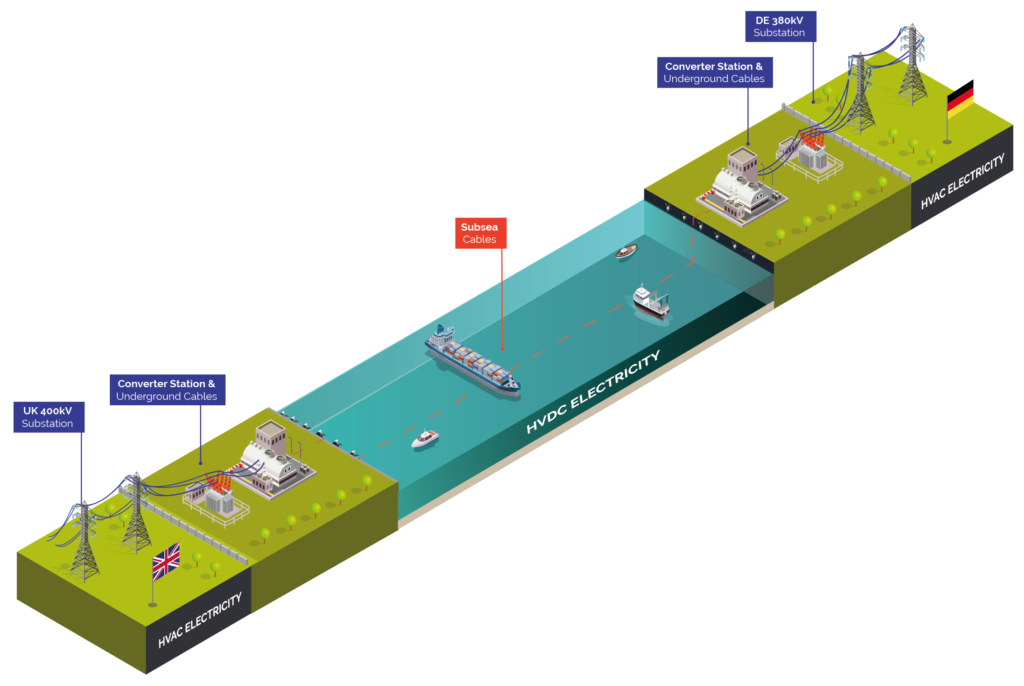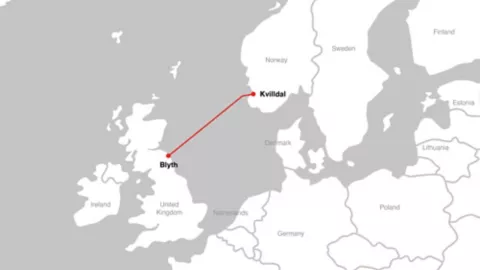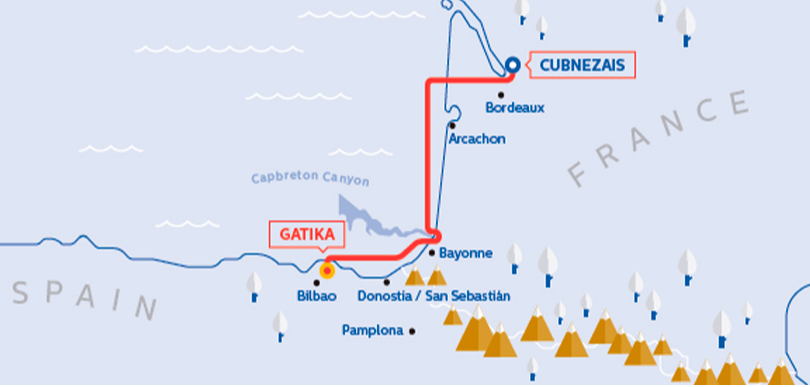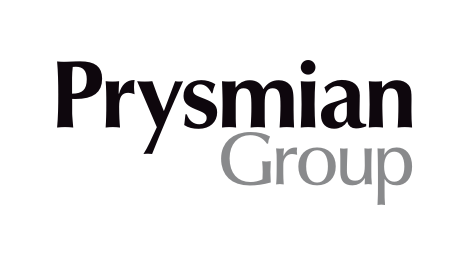Prysmian – Prysmian selected as preferred bidder for BalWin1, BalWin2 and DC34Power transmission cable projects in Germany
Prysmian Group, world leader in the energy and telecom cable systems industry, has been selected by the TSO Amprion, one of the leading European TSOs, as preferred bidder for the two Offshore Grid Connection Systems BalWin1 and BalWin2 and the underground cable project DC34.
The preferred bidder agreement provides an obligation on the parties to negotiate in good faith the outstanding items of the projects with a target to execute the final contracts by 15 January 2024. Prysmian is committed to reserve the required production and installation capacity until the aforementioned date. The contracts are valued in aggregate at around 4.5 billion Euros.
The three projects are part of the Germany’s overall plan to install 70 GW of offshore wind energy by 2045 and will support the transmission of the energy generated in the North Sea to consumers in the Western and Southern regions of the country.
“This agreement is a huge step towards realizing these three important projects in time. Thus, the major components for our offshore projects are secured until 2030”, commented Hendrik Neumann, CTO of Amprion.
“Prysmian is highly committed to the development of greener and smarter power grids, supporting Amprion as one of our key customers in it’s important energy transition targets” commented Hakan Ozmen, EVP Projects BU, Prysmian Group.
BalWin1 and BalWin2 will transmit each up to 2 GW of energy from the future offshore wind farms to be located in the German North Sea BalWin Cluster to the grid connection points in Wehrendorf (Lower Saxony) and Westerkappeln (North Rhine-Westphalia) and thus supporting the energy transition in the industrial heart of Germany. Each cable system will consist of two single-core ±525 kV HVDC copper cables with XLPE insulation for the submarine sections and P-Laser insulation for the land underground sections, plus a dedicated metallic return cable and a fibre optic cable. BalWin1 will utilize approx. 1,070 km of cables along a 358 km route, whereas BalWin2 will use approx. 1,100 km of cables over a route of 376 km.
DC34 (Number 82 of the Federal Requirement Plan Act) as part of the Rhein-Main-Link will instead connect the substation in the area of Ovelgönne/Rastede/Wiefelstede/Westerstede (Lower Saxony) to a second substation in Bürstadt (Hesse) to transmit up to 2 GW of energy produced by the offshore wind farms in the North Sea to consumers in the Rhine-Main metropolitan area. The cable system will consist of two single-core ±525 kV HVDC copper cables with P-Laser insulation, including a dedicated metallic return cable. DC34 will consist of up to 2,100 km of cables for this cross Germany route.
SourcePrysmian Group
EMR Analysis
More information on Prysmian: See the full profile on EMR Executive Services
More information on Valerio Battista (Group Chief Executive Officer, Prysmian Group until the 2024 Annual General Meeting (April)): See the full profile on EMR Executive Services
More information on Massimo Battaini (Group Chief Operating Officer and Executive Director, Prysmian Group + Proposed Candidate as CEO at the 2024 Annual General Meeting (April)): See the full profile on EMR Executive Services
More information on Hakan Ozmen (EVP Project Business, Prysmian Group): See the full profile on EMR Executive Services
More information on Amprion GmbH: https://www.amprion.net/index-2.html + The power network is similar to the road network. There are local and long-distance routes. Amprion and three other transmission system operators are responsible for the long-distance routes in the German electrical network, each in its own grid area. Our extra-high-voltage network is 11,000 kilometres long and transports electricity across an area that extends from Lower Saxony to the Alps. This area is home to 29 million people and around a third of Germany’s economic output. Our power lines are lifelines of society: They secure people’s jobs and their quality of life. We maintain the grid in a stable and secure condition so the lights never go out. We are also preparing the way for a climate-compatible energy system: we are extending our network so that power from the wind and sun can get safely and reliably to where it is needed. We also perform overarching operations for integrated grid systems in Germany and Europe.
More information on Dr. Hans-Jürgen Brick (CEO, Amprion GmbH): https://www.amprion.net/Amprion/Gesch%C3%A4ftsf%C3%BChrung/Lebenslauf-Dr.-Brick/
More information on Dr. Hendrik Neumann (CTO, Amprion GmbH): https://www.amprion.net/Amprion/Gesch%C3%A4ftsf%C3%BChrung/Lebenslauf-Dr.-Neumann/ + https://www.linkedin.com/in/hendrik-neumann/
More information on BalWin1 and BalWin2 by Amprion GmbH: https://offshore.amprion.net/Offshore-Projekte/LanWin1-LanWin3/index-2.html + In order for Germany to achieve its climate targets, offshore wind farms are to deliver as much power as 40 large coal-fired power plants by 2030. This requires not only new offshore windfarms, but also new cables connecting them to the transmission grid. This is the remit of the BalWin1 and BalWin2 offshore grid connection systems that are planned. To this end, Amprion has been legally mandated to build these grid connection systems from the North Sea to Wehrendorf and Westerkappeln. From the wind farms to the coast, these connections will be run as submarine cables, passing underthe island of Norderney. On land, the installations will be realised as underground cables.
Multiple wind farms are already putting the transmission grid in the coastal region of Lower Saxony under great strain. The Federal Network Agency has therefore decided to relocate the connection points for future wind power connections further inland – including those for BalWin1 (Wehrendorf in southern Lower Saxony) and BalWin2 (Westerkappeln in northern North Rhine-Westphalia). At each of these new connection points, Amprion will build a transformer substation that will serve as the grid connection point for the respective transmission line.
The two offshore grid connection systems will be installed parallel to one another on land and for the most part at sea, too. BalWin1 is an approximately 360 kilometre-long connection, some 155 kilometres of which will be laid at sea. BalWin2 will also have a total route length of around 380 kilometres, with some 165 kilometres at sea. The land sections of both BalWin1 and 2 are planned as underground direct current cables. Each of them has a transmission capacity of 2,000 megawatts, and together they will be able to satisfy the electricity needs of around four million people from offshore wind energy.The grid connection systems will go into service in 2029 (BalWin1) and 2030 (BalWin2).
EMR Additional Notes:
- Transmission System Operator (TSO):
- A Transmission System Operator (TSO) is an entity entrusted with transporting energy in the form of natural gas or electrical power on a national or regional level, using fixed infrastructure. The term is defined by the European Commission.
- HVDC Light:
- HVDC Light is the successful and environmentally-friendly way to design a power transmission system for a submarine cable, an underground cable, using over head lines or as a back-to-back transmission. HVDC Light is HVDC technology based on voltage source converters (VSCs).
- HVDC Light is designed to transmit power underground and underwater, also over long distances. It offers numerous environmental benefits, including “invisible” power lines, neutral electromagnetic fields, oil-free cables and compact converter stations.
- As its name implies, HVDC Light is a dc transmission technology. However, it is different from the classic HVDC technology used in a large number of transmission schemes. Classic HVDC technology is mostly used for large point-to-point transmissions, often over vast distances across land or under water. It requires fast communications channels between the two stations, and there must be large rotating units – generators or synchronous condensers – present in the AC networks at both ends of the transmission. HVDC Light consists of only two elements: a converter station and a pair of ground cables. The converters are voltage source converters, VSC’s. The output from the VSC’s is determined by the control system, which does not require any communications links between the different converter stations. Also, they don’t need to rely on the AC network’s ability to keep the voltage and frequency stable. These feature make it possible to connect the converters to the points bests suited for the AC system as a whole.
- HVDC (High-Voltage Direct Current):
- Key enabler for a carbon-neutral energy system. It is highly efficient for transmitting large amounts of electricity over long distances, integration of renewables and interconnecting grids, opening up for new sustainable transmission solutions.
- HVDC Links:
- The first successful HVDC experimental long distance line (37 miles) was made at Munich, Germany in 1882 by Oskar Von Miller and fellow engineers.
- HVDC allows power transmission between AC transmission systems that are not synchronized. Since the power flow through an HVDC link can be controlled independently of the phase angle between source and load, it can stabilize a network against disturbances due to rapid changes in power.
- An HVDC line has considerably lower losses compared to HVAC over longer distances.

- Neu Connect (the first power interconnection between Great Britain and Germany): https://neuconnect-interconnector.com +
- The NeuConnect Interconnector will create the first direct power link between Germany and Great Britain, connecting two of Europe’s largest energy markets for the first time. Around 720km of land and subsea cables will form an ‘invisible highway’ allowing up to 1.4GW of electricity to move in either direction, enough to power up to 1.5 million homes over the life of the project.

- The Tyrrhenian Link: https://www.terna.it/en/projects/public-engagement/Tyrrhenian-link +
- Connecting Sicily with Sardinia and the Italian peninsula via a double underwater cable: a new electricity corridor at the centre of the Mediterranean; the Tyrrhenian Link. At 950 kilometres long and with a capacity of 1000 MW, this is an infrastructure initiative of international significance, another step towards a more sustainable energy future. The link will improve electricity exchange capacity, facilitate the development of renewable energy sources, and the reliability of the grid.
- The overall project involves two sections: EAST from Sicily to Campania and WEST from Sicily to Sardinia.
- The East section is 480 kilometres long and connects the Fiumetorto landing point, in the municipality of Termini Imerese in Sicily, with the landing point in Torre Tuscia Magazzeno, near Battipaglia in Campania.
- The WEST section is approximately 470 kilometres long and connects the Fiumetorto landing point to the one in Terra Mala, in Sardinia.

- The Viking Link: https://viking-link.com +
- World’s longest power interconnection. the Viking Link is a 1400 MW high voltage direct current (DC) electricity link between the British and Danish transmission systems connecting at Bicker Fen substation in Lincolnshire and Revising substation in southern Jutland, Denmark.

- The North Sea Link: https://northsealink.com/ + North Sea Link is a 720 kilometre subsea interconnector linking the electricity systems of the UK and Norway. The 1400 megawatt interconnector stretches from Blyth in the UK, across the North Sea, to Kvilldal in Norway.

- The Hertel–New York interconnection line: https://www.hydroquebec.com/projects/hertel-new-york-interconnection/ + The Hertel–New York interconnection line project aims to supply clean, renewable energy to New York City. In Québec, the project involves the construction of a line that will span 57.7 km (56.1 km underground and 1.6 km underwater). This 400-kV direct current line will connect Hertel substation in La Prairie to an interconnection point in the Rivière Richelieu at the Canada–United States border.

- The Biscay Gulf Project: https://www.inelfe.eu/en/projects/bay-biscay + The electricity interconnection between Gatika (Spain) and Cubnezais (France) will be the first fundamentally submarine interconnection between Spain and France. This project will increase the exchange capacity from 2,800 to 5,000 MW, improving the safety, stability and quality of electricity supply between the two countries and also with the rest of Europe.

- The Eastern Green Link 2 (EGL2): https://www.ssen-transmission.co.uk/projects/project-map/eastern-green-link-2/ + The Eastern Green Link 2 project is a proposal to install a sub-sea high-voltage direct current (HVDC) cable from Sandford Bay, at Peterhead, to Drax in England. There is currently a large amount of forecasted generation that will require connection to the electricity network in the coming years and as such we are proposing several upgrades to the transmission network across the north of Scotland to facilitate this. The Eastern HVDC Link will play a key role in helping achieve our Net-Zero targets.

- The EuroAsia Interconnector: https://euroasia-interconnector.com/ + EuroAsia Interconnector Limited is the official EU project developer of the 2,000MW electricity interconnector between Israel, Cyprus, Greece and Europe. The EuroAsia Interconnector is a leading European Project of Common Interest (PCI) labelled as an EU “electricity highway” connecting the national electricity grids of Israel, Cyprus and Greece through a 1,208 km subsea HVDC cable.
- The EuroAsia Interconnector comprises the electricity interconnection between the grids of Israel, Cyprus, Greece through a subsea DC cable and with HVDC onshore converter stations at each connection point, with a total capacity of 2000MW. The project is an energy highway bridging Asia and Europe, with a total length of 1,208 km. It creates a reliable alternative route for the transfer of electric energy to and from Europe.

- Low Voltage (LV):
- The International Electrotechnical Commission (IEC) defines supply system low voltage as voltage in the range 50–1000 V AC or 120–1500 V DC.
- Medium Voltage (MV):
- Medium-voltage circuit breakers rated between 1 and 35/72 kV.
- High Voltage (HV):
- The International Electrotechnical Commission define high voltage as above 1000 V for alternating current, and at least 1500 V for direct current.
- Super High Voltage:
- Is >300kV.
- Ultra High Voltage:
- Is >1.000kV.
- XLPE:
- Cross-linked polyethylene, commonly abbreviated PEX, XPE or XLPE, is a form of polyethylene with cross-links.
- XLPE or Cross-linked polyethylene is a thermoset insulation material. Crosslinking polymers is a process which changes the molecular structure of the polymer chains so that they are more tightly bound together and this crosslinking is done either by chemical means or physical means.
- XLPE is suitable for voltage ranges from low to extra high voltage, surpassing other insulation materials such as PVC, Ethylene Propylene Rubber (EPR) and silicone rubbers. Cross-linking the polyethylene also enhances the chemical and oil resistance at elevated temperatures and makes it suitable for use as a Low Smoke Zero Halogen material.
- 4 Types of Network Cabling:
- Coaxial Cable:
- Coaxial cables have a single copper conductor at the center, while a plastic layer provides insulation between the center conductor and braided metal shield. The metal shield blocks outside interference from fluorescent lights, motors, and other computers.
- Fiber Optic Cable:
- Fiber optic cables possess a center glass core surrounded by multiple layers of protective materials. They avoid electrical obstruction by transmitting light instead of electronic signals, making them perfect for environments with large amounts of electrical interference. Fiber optic cables have become the standard for connecting networks across buildings because of their resistance to moisture and lighting.
- Shielded Twisted Pair (STP) Cable:
- Often referred to colloquially as simply ethernet cables, STP cables employ a special type of copper telephone wiring used for business installations. An external shield functioning as a ground is added to the standard twisted pair of telephone wires.
- Unshielded Twisted Pair (UTP) Cable:
- Unshielded twisted pair (UTP) cables are broadly used in the telecommunications and computer industries as ethernet cables and telephone wires. In a UTP cable, conductors forming a single circuit are twisted around one another to cancel out electromagnetic interference (EMI) from external sources.
- Coaxial Cable:
- FTTx:
- Fiber to the Home (FTTH), Fiber to the Building (FTTB), Fiber to the Premises (FTTP) and Fiber to the Curb (FTTC), termed as FTTx are various technology and deployment options developed to enable reach of fiber as close to the user location as possible to provide high speed data and voice services.
- Fiber to the home (FTTH) is the delivery of a communications signal over optical fiber from the operator’s switching equipment all the way to a home or business, thereby replacing existing copper infrastructure such as telephone wires and coaxial cable.
- FTTP and FTTH are two different abbreviations for the same thing. FTTP stands for ‘fibre to the premises’ and FTTH stands for ‘fibre to the home’. … Unlike FTTC, FTTP broadband is delivered via fibre-optic cables not only as far as the cabinet, but across the entire span to your home or business.
- Fiber-optic cables are less susceptible to glitches than traditional copper wires and can withstand the shock and vibration from inclement weather. FTTH is considered “future proof” and offers the flexibility to deliver additional services in the years to come.

- Key Differences Between Copper Cable and Fiber Optics:
- Data transmission speed of a fiber cable is comparatively more than that of copper cable. Copper cables are nearly 31% slower in data transmission than fiber cable.
- A copper cable transmits the data through it in the form of electrical pulse i.e., due to the movement of electrons. As against in a fiber optics, the data transmission is the result of movement of photons thus it transmits in the form of light pulses.
- The bandwidth provided by a copper cable is less than that of the fiber optics. Thus, a copper cabling meets the industry standards and provides a performance of up to 10 Gbps. However, a fiber optics due to its large bandwidth possess better performance of up to 60 Tbps and above.
- The energy consumed by a copper cable during its operation is somewhat greater than 10W but on the other side, fiber optics consumes less energy i.e., around 2W per user.
- The lifespan of a copper wire is approximately 5 years as it gets easily affected by temperature variations and other environmental factors. However, fiber optics possess a lifespan of 30 to 50 years.
- As fiber optics are difficult to be tapped as compared to copper cables thus proves advantageous from the security point of view. Due to this reason fiber optics are widely used for data transmission at present time.
- A fiber optics allows transmission of data at a much faster rate as compared to copper cable.
- The installation and maintenance cost of a fiber cable is more than copper cable.


